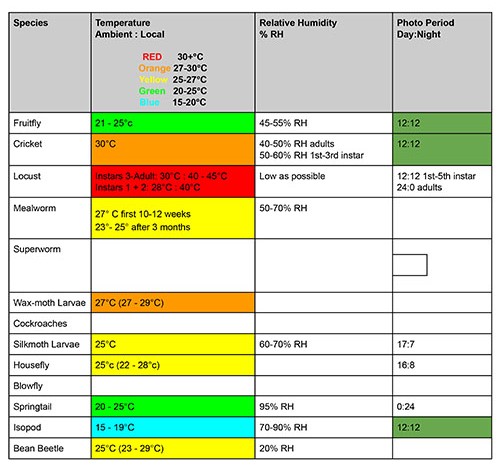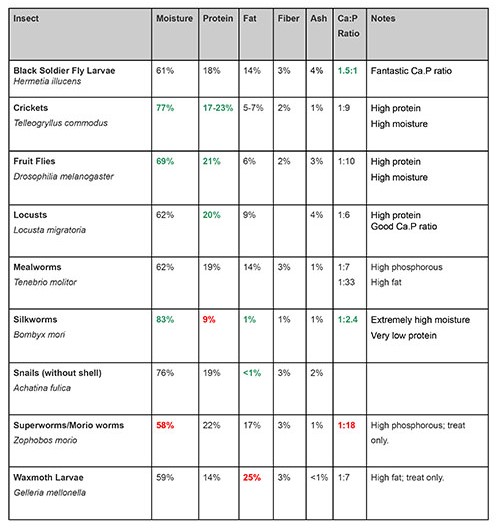What to feed NZ lizards?
The majority of New Zealand lizards (geckos and skinks) are omnivorous. When holding them in captivity it is important to provide them with a varied diet which includes both invertebrates and fruit as components.
Invertebrates:
The main component of the diet for New Zealand geckos and skinks comprises invertebrates. Depending on the particular species may include:
- Flies
- Moths
- Cockroaches
- Crickets and locusts
- Weta
- Beetles
- Isopods
- Amphipods
- Spiders
Flies and moths can be caught using a variety of home made traps. The following are examples of traps made by NZHS members:
Left: Moth trap made with a UV light (for attracting moths) above a cone inserted into a jar for collecting insects which fall in.
(Photos: Reino Grundling)
For terrestrial species such as most skinks, variety can be added to the diet by collecting fresh leaf-litter which contains a variety of invertebrates such as slaters, amphipods, beetles and spiders. If using this method, take care not to introduce any large spiders or giant centipedes (Cormocephalus spp.) which may injure or prey upon the lizards.
Insects can also be collected by sweeping a net through long-grass.
The following invertebrates should not be used for food items as they are either toxic or may injure your lizards:
- Monarch butterflies and their caterpillars - toxic to lizards.
- Magpie moths - toxic to lizards.
- Bees - may sting your lizards.
- Wasps - may sting lizards, or prey upon juvenile lizards.
- Giant centipedes (Cormocephalus spp.) - known to prey on lizards.
- Large spiders - known to prey on lizards.
- White-tailed spiders and spiders in the widow family (e.g. Steatoda spp.) - these have been reported to potentially injure / kill smaller lizards in captivity.
- Large praying mantis - can be fed to larger lizards such as Duvaucel's geckos, but have been reported to prey on juvenile geckos and skinks.
Captive-bred insects can also be purchased from several suppliers. These insects should be dusted with a reptile multi-vitamin and calcium supplement as they are less nutritious than insects from the wild. Mealworms (Tenebrio molitor) should not be used as a staple part of the diet for NZ lizards because they contain high levels of indigestible chiton which can cause impaction, they also have a low calcium to phosphorus ratio (Ca:P), so an over-reliance on them as part of the lizard's diet may lead to metabolic bone disease.
Culturing Live Food:


Fruit:
Many NZ lizards are known to feed on fruit / berries from native plants in the wild, particularly those of Coprosma spp., Melicytus spp., and Kawakawa (Piper excelsum). For some species, fruit may comprise up to 30% of their diet. When in season, NZ lizards can be fed on these berries which can be grown in your garden or collected from another suitable location.
NZ lizards can also be fed on mashed banana, pieces of watermelon, mango etc. or commercially available fruit puree (sold in pouches or jars at most supermarkets). When using mashed or pureed fruit, reptile vitamin supplement and calcium powder (e.g. Repashy calcium plus) should be mixed in to ensure you are meeting all of their dietary requirements. A small amount of honey can provide added sweetness and help minimise mould growth on unconsumed fruit mixes.
Fruits provided should be varied, as fruits vary widely in their nutrient profiles. Where possible, native plants can provide soft fruits that the lizards may naturally consume. Examples include Kawakawa, Mahoe, Coprosma, etc.
Frequency of feeding
Lizards are ectotherms (cold-blooded), this means that instead of producing their own heat (as mammals do) - which uses up a lot of energy - they use the heat from their environment to regulate their own body temperature. Consequently, they are very energy-efficient and their required food intake is much less than a mammal of the same size.
During the warmer months (September to May) lizards should be fed once or twice per week.
During the colder months (June to August) lizards will be fairly inactive and may not feed much, if at all. At this time of year the volume and frequency of feeding should be reduced. Feeding when the weather is cool (and the lizards relatively inactive) may cause issues with food not being digested properly. Feeding of blowflies during this time is generally discouraged, as it has been known to lead to fly-strike in NZ geckos.
The amount of food required depends on the size, age and species of lizard. Lizards which are over-fed may become obese (watch for weight gain around the legs, neck and tail). Refer to images of wild lizards in our Herpetofauna species synopses to see whether your captive lizards match with the condition of wild individuals.
